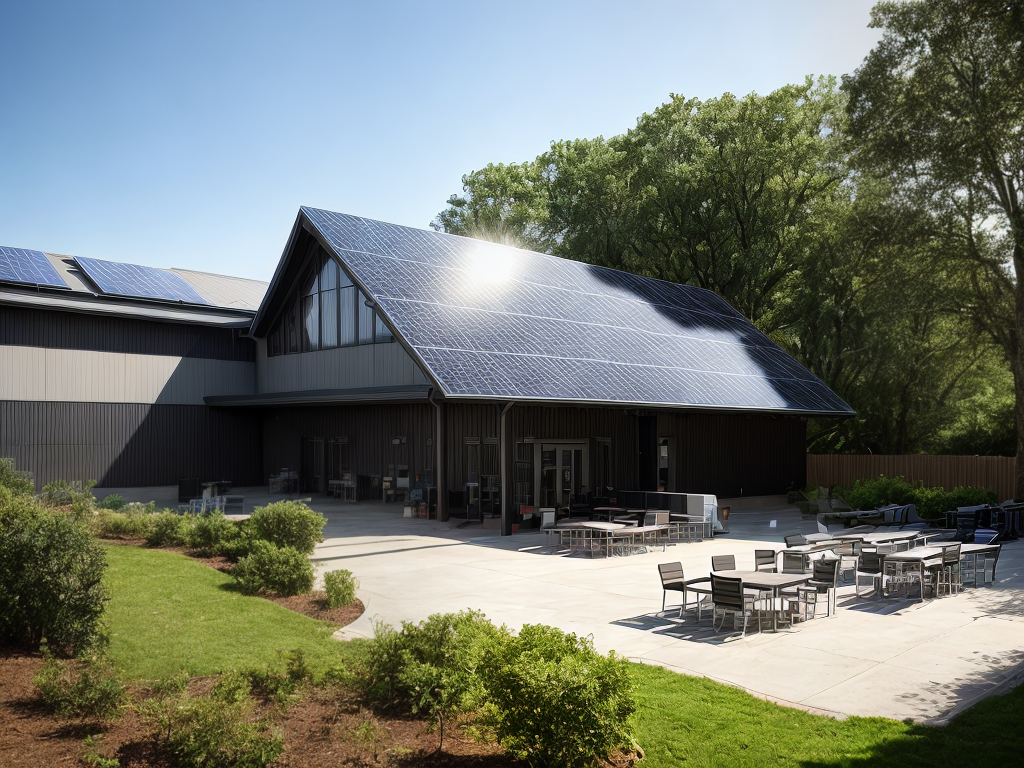
At our school, we’ve discovered innovative ways to save on our utility bills while also educating our students about the importance of renewable energy. One example is the installation of solar panels on our rooftops, which harness the power of the sun to generate clean and sustainable electricity. Additionally, we’ve implemented energy-efficient systems throughout the campus, optimizing our usage and reducing waste. We’ve also introduced behavior change initiatives, encouraging students and staff to adopt energy-saving habits. Not only are we saving money on bills, but we’re also integrating renewable energy into our curriculum, equipping our students with the knowledge and skills needed for a sustainable future. Through community partnerships, we’re fostering a culture of sustainability, inspiring others to follow suit. Together, we’re making a difference.
Solar Panel Installations
We installed solar panels on the roof of our school. This decision was motivated by the government incentives provided to educational institutions for adopting renewable energy sources. By taking advantage of these incentives, we were able to significantly reduce the upfront cost of the installation. Moreover, solar panels have proven to be highly cost-effective in the long run. They generate clean and sustainable energy, which has drastically reduced our dependence on traditional power sources. As a result, we have witnessed a substantial decrease in our electricity bills, allowing us to allocate those savings towards other educational resources. The installation of solar panels not only benefits our school financially but also serves as an educational tool for our students. It provides them with firsthand experience and knowledge about renewable energy, fostering their understanding of sustainability and environmental consciousness.
Energy-Efficient Systems Implementation
To further reduce our energy consumption and maximize savings, we implemented energy-efficient systems throughout our school. By incorporating smart technology and energy management strategies, we have been able to optimize our energy usage and achieve significant cost savings. Here are some of the energy-efficient systems we have implemented:
- Smart thermostats: These devices automatically adjust temperature settings based on occupancy and external conditions, ensuring optimal comfort while minimizing energy waste.
- LED lighting: We have replaced traditional light bulbs with energy-efficient LED lights, which consume less electricity and have a longer lifespan.
- Occupancy sensors: These sensors detect movement in a room and control lighting and HVAC systems accordingly, preventing unnecessary energy usage in unoccupied spaces.
Through the implementation of these energy-efficient systems, we have not only reduced our environmental footprint but also educated our students about the importance of sustainable practices.
Behavior Change Initiatives
By encouraging active participation and fostering a culture of sustainability, our school community has embraced behavior change initiatives that promote energy conservation and renewable practices. One of the key initiatives we have implemented is energy consumption tracking. Through the use of smart meters and data analytics, we are able to monitor and analyze our energy usage patterns. This allows us to identify areas of high consumption and develop strategies to reduce energy waste. In addition, we have also introduced incentive programs to motivate students and staff to adopt energy-saving behaviors. These programs offer rewards and recognition to individuals or classrooms that consistently demonstrate energy-conscious habits. By combining energy consumption tracking with incentive programs, we have seen a significant reduction in our school’s energy consumption, leading to both cost savings and a positive impact on the environment.
Renewable Energy Curriculum Integration
Through the integration of renewable energy curriculum, our school is equipping students with the knowledge and skills needed to understand and embrace sustainable practices. Our curriculum focuses on the latest green technology advancements and sustainable energy practices, ensuring that students stay up-to-date with the rapidly evolving field. Here’s how we’re achieving this:
- Engaging lessons: Our curriculum includes hands-on activities and real-world case studies, allowing students to explore renewable energy technologies in a practical and meaningful way.
- Collaborative projects: Students work together to design and implement renewable energy solutions, fostering teamwork and problem-solving skills.
- Guest speakers and field trips: We invite experts in the field and organize visits to renewable energy facilities, giving students the opportunity to learn from industry professionals and witness sustainable practices in action.
Community Partnerships for Sustainability
Our school has formed community partnerships to promote sustainability and drive renewable energy initiatives. These partnerships have been instrumental in the development of green infrastructure within our school and the surrounding community. Through collaboration with local businesses and organizations, we have been able to implement various waste reduction strategies that have significantly reduced our environmental impact. Our partners have provided expertise and resources to help us improve our waste management systems, such as implementing recycling programs and composting initiatives. Additionally, they have supported the installation of renewable energy systems, such as solar panels, to help us generate clean energy and reduce our reliance on fossil fuels. These community partnerships have not only allowed us to make positive changes within our school but have also fostered a sense of collective responsibility for sustainability in our community.
Conclusion
In conclusion, schools are making significant progress in saving on bills and educating on renewables. Through the installation of solar panels and implementation of energy-efficient systems, schools are reducing their reliance on traditional energy sources. Additionally, behavior change initiatives are encouraging students and staff to adopt sustainable practices. Integration of renewable energy curriculum and partnerships with the community further contribute to a more sustainable future. Together, these efforts are creating a greener and more efficient educational environment.

